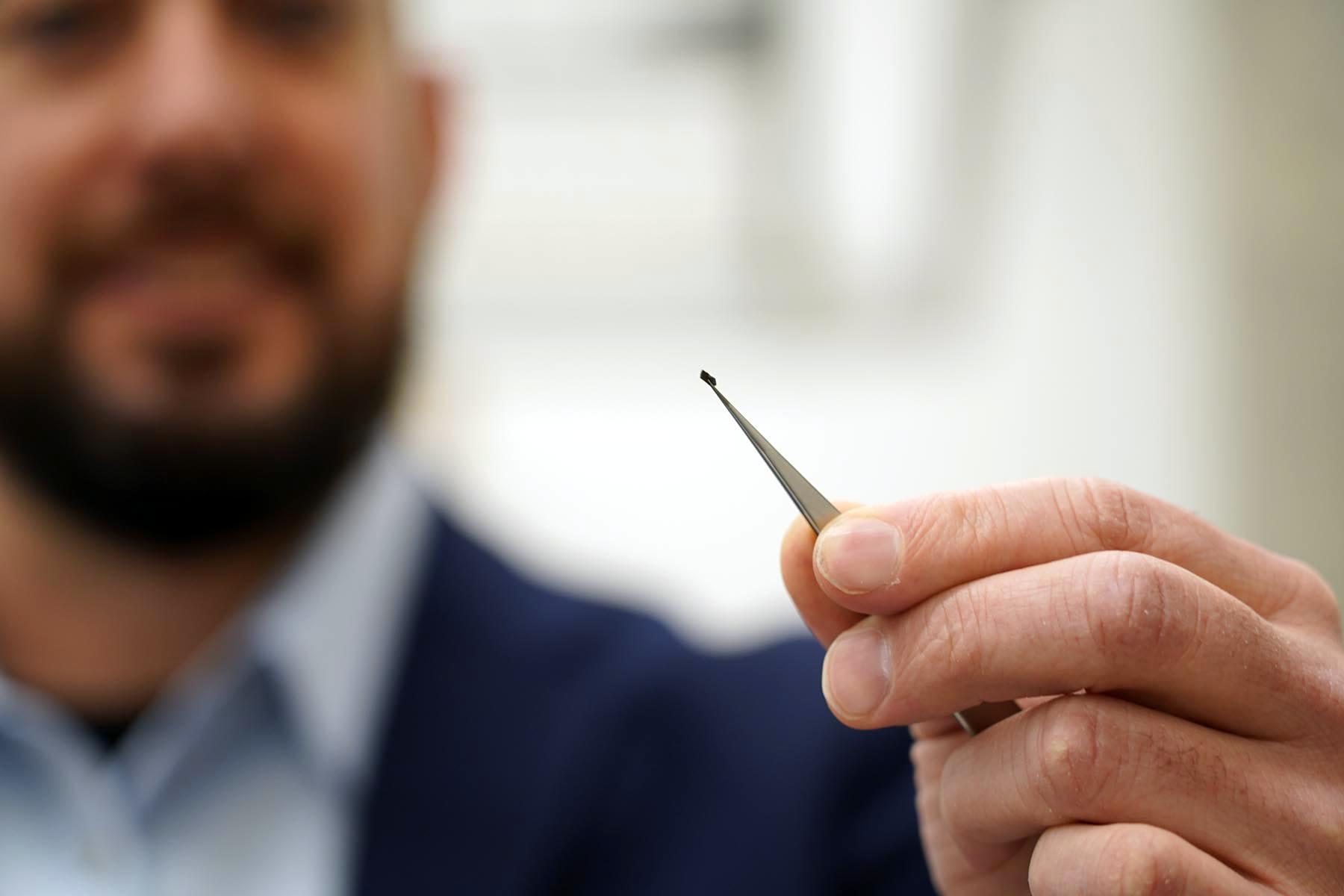Tackling inflammatory bowel disease with tumbling microrobots

David Cappelleri, Associate Professor of Mechanical Engineering, has experimented with mobile microrobots for years. “We use an external magnetic field to tumble over complex topography, such as what you’d encounter inside a human body,” he said. “This enables us to make the robots very small, and control them very precisely.”
Cappelleri teamed up with Craig Goergen, Leslie A. Geddes Associate Professor of Biomedical Engineering; and Luis Solorio, Assistant Professor of Biomedical Engineering. Using the colon of a live mouse, in 2020 they successfully demonstrated the first tumbling microrobot through a biological system in vivo.
Based on these successes, the team has received a 3-year, $1.11 million grant to expand their work, as part of the NIH’s National Robotics Initiative 3.0 program, funded by the National Center for Advancing Translational Sciences (NCATS). Their goal is to use these microrobots to deliver targeted therapy for colorectal disease, specifically inflammatory bowel disease (IBD).
Why focus on the colon? “There are several aspects that make IBD a perfect target for these robots,” said Goergen. “Most IBD therapies today have a broad effect on the entire gastrointestinal system, when it’s only a small section of the colon that might be inflamed. It’s a messy environment, and these robots have shown they can navigate the complex topography. When they’ve finished their work, they have a natural route to evacuate from the body. Precise interventions like this will reduce side effects for the patients.”
The team plans to continue using live animals as an analog for the human colon. While Cappelleri refines the robots, Goergen will focus on the ultrasound imaging to help the robots find their target. Solorio will focus on the third aim of the project: designing a release system to deliver a therapeutic payload.
“This is a very complex task,” said Solorio. “These robots are very small, and delivering a precise amount of medication to a precise location involves many factors. We’ve done experiments in the lab with a saline environment, but getting a precise controlled release inside a biological system will be the challenge.”
The team is also collaborating with Dr. Thomas F. Imperiale, the Lawrence Lumeng Professor of Gastroenterology and Hepatology at Indiana University School of Medicine, who will advise them on the potential efficacy of their treatments in colorectal diseases.
“Current treatments for IBD only help a small percentage of people, and they cause a lot of side effects,” said Goergen. “A powerful, targeted therapy, that could be delivered locally with reasonable precision, would represent a major breakthrough for colorectal disease.”
“This project has great potential for impact in both the microrobotics and healthcare fields,” said Cappelleri. “We are creating an integrated system that is very precise, has a small footprint, and is minimally invasive to the patient. If we can demonstrate success in this area, the potential for other therapies is unlimited.”
This research is part of the Purdue Center for Cancer Research and aligns with Purdue Engineering Initiatives in Autonomous and Connected Systems and Engineering-Medicine.
Writer: Jared Pike, jaredpike@purdue.edu, 765-496-0374
Source: David Cappelleri, dcappell@purdue.edu, 765-494-3719
Craig Goergen, cgoergen@purdue.edu, 765-494-1517
Luis Solorio, lsolorio@purdue.edu, 765-496-1956
